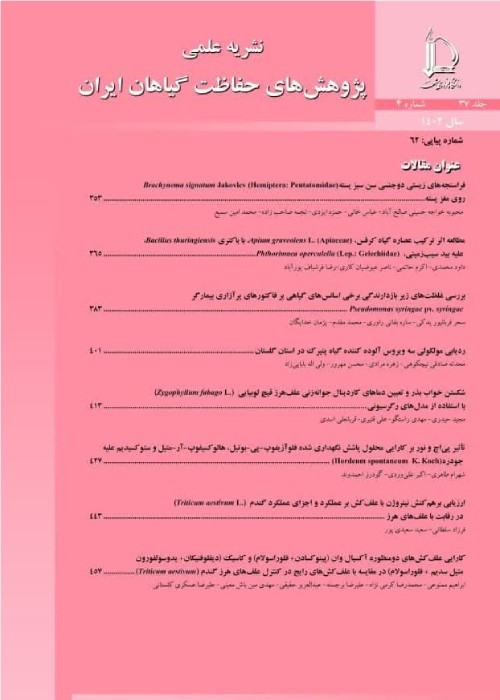Comparison of Physical Properties in Weed-Rye (Secale cereale L.) and Winter Wheat (Alvand cultivar) Seeds in Golestan Province
Contamination of wheat seeds in southern Golestan province (Shahkooh village) with rye has rendered it a weed in wheat fields. Due to the lack of suitable herbicides, it is very difficult for farmers to control weed-rye. According to observations, many farmers use rye-infected self-consumed wheat seeds for cultivation. Separation of rye seeds from wheat seeds is very difficult due to their similarity in appearance, and farmers are not aware of the possibility of seed separation. Therefore, this study was conducted to compare the physical properties of rye and wheat seeds to improve seed separation.
Rye seeds were collected from wheat fields in Shahkooh village. The seeds of Alvand wheat cultivar, which is a common cultivar in Shahkooh region, were also obtained from Shahkooh Rural. The studied physical properties included seed size (seed length, width and thickness), seed surface area, seed weight, spherical percentage, bulk density, true density, porosity percentage, angle of repose and coefficient of friction. Physical properties of the seeds were studied at five seed moisture levels including 10, 15, 20, 25 and 30%.
Based on the results, the length, width and surface area of both wheat and rye seeds were not affected by seed moisture. Only in wheat, seed thickness increased with increasing seed moisture content. Since these properties determine the final seed size, it can be said that the seed size remained almost constant by increasing the percentage of seed moisture in these two plants. On the other hand, in all moisture levels, the width, thickness and surface area of wheat seeds were higher than those of rye seeds. In contrast, seeds length of rye was longer than wheat seeds. In wheat seeds, the spherical percentage increased linearly by increasing seed moisture content, but its amount was constant in rye at different seed moisture content. The significant difference between the spherical percentage of wheat and rye seeds also indicates that the wheat seed is more spherical compared to rye at all moisture levels. The seed weight increased linearly with increasing seed moisture content in both wheat and rye plants, with a higher slope in wheat than rye. In addition, wheat seed weight was higher than rye seed weight in all moisture levels. The existence of these differences in the dimensions, the shape and weight of wheat and rye seeds can be considered as the basis for their separation. In wheat and rye plants, the bulk density, true density and percentage of seed porosity decreased linearly by increasing seed moisture content. Also, the bulk density and true density in wheat was higher than in rye at all moisture levels. With an increase in seed moisture from 10 to 30 percent, the porosity percentage in both wheat and rye plants decreased by about 14 percent on average, and there was no significant difference between them in terms of the percentage of porosity at different moisture levels. An increase in the percentage of seed moisture caused a linear increase in the angle of repose. In other words, the ability of seeds to move was reduced by increasing the moisture content in two wheat and rye plant. There was no significant difference in the angle of repose between wheat and rye at any of the moisture levels. In this study, the coefficient of friction in wheat and rye seeds linearly increased on different materials by increasing seed moisture content. There was no significant difference in the coefficient of friction on galvanized iron and cement surfaces at different moisture levels between wheat and rye. However, the coefficient of friction in wheat was always higher than rye on plastic, wood and rubber surfaces. Due to these differences, it is easy to remove rye seeds from wheat seed lots and prevent rye from re-entering the wheat fields during planting.
According to the results of this study, there is a significant difference between wheat and rye seeds in terms of physical characteristics. These differences facilitate separation of rye seeds and avoid entry into wheat seed lots. The difference in the length, width, thickness and density of the seeds in these plants makes it possible to use length or width based separators, air screen machines and gravity separators.
- حق عضویت دریافتی صرف حمایت از نشریات عضو و نگهداری، تکمیل و توسعه مگیران میشود.
- پرداخت حق اشتراک و دانلود مقالات اجازه بازنشر آن در سایر رسانههای چاپی و دیجیتال را به کاربر نمیدهد.



